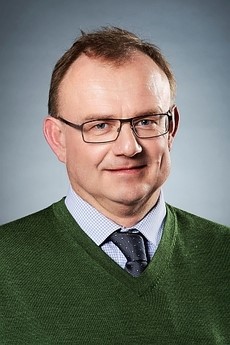Obituary
 |
We mourn the loss of our colleague and friend, Prof. Dr.-Ing. Robert Stieglitz, who passed away unexpectedly. The Institute of Thermal Energy Technology and Safety (ITES) can look back on a long journey together with Robert Stieglitz, which began back in January 1991 when he joined the Institute, then still called the "Institute of Applied Thermo- and Fluid Dynamics", where he completed his doctorate in 1994 with a thesis on "Magnetohydrodynamic flows in single- and multi-channel deflections". Robert was a thoroughly creative engineer and passionate scientist. He had pursued his path with diligence, dedication and unwavering determination. He was admired for his enormous specialist knowledge and his ability to link topics, develop new ideas from them and follow his path stringently. Discussions with him were intense and challenging, always focused on the matter in hand, and if you could convince him, you had his full support. He was always fair, approachable and very down-to-earth. His scientific highlights certainly include the "Geodynamo" as experimental proof that the vortical flow of electrically conductive liquid can generate a self-induced magnetic field. This confirmed the theories on the origin of the Earth's magnetic field. As head of the experiment, Robert Stieglitz, together with the technicians and engineers of the sodium laboratory, implemented this idea in a large-scale experimental setup in 2000. Instead of iron and nickel in the Earth's interior, he used large quantities of sodium, as well as pumps, valves and other liquid metal components. It worked, the magnetic field formed solely due to the vortex structures created in the sodium, and Robert was able to proudly show the incredible result to the many visitors from all over the world, who even turned up by the busload. At that time, the institute's KALLA laboratory was also under construction. Under the direction of Joachim Knebel, three large facilities with liquid lead bismuth were to be set up side by side. But in May 2002, Joachim Knebel was appointed head of the Nuclear Safety Research program and left the institute. At that time, the facilities at KALLA had barely been completed. Robert Stieglitz was the ideal scientist to take on this major task. His liquid metal experience provided an ideal basis. One of the highlights of the KALLA laboratory during this time was the testing of a prototype of the MEGAPIE target, which was later used as a long-lived spallation neutron source at the Paul-Scherrer-Institute in Switzerland. He also started experiments on the flow in a fuel assembly and for a windowless spallation target for the accelerator-driven reactor MYRRHA, which was to be built in Belgium. Based on Robert's scientifically and strategically far-sighted concept, these fundamental experiments have shaped international research in this field for over a decade and will have a lasting impact. No experiment was too big for Robert. After just a few years, the KALLA laboratory was one of the leading research facilities for liquid heavy metals in Europe. The fact that he also continued to develop measuring devices for liquid metals, including non-contact flow and velocity meters, is sometimes eclipsed by his other activities. In 2009, Robert Stieglitz was appointed head of the Institute of Neutron Physics and Reactor Technology and left our institute and the KALLA laboratory. But even after that, he remained associated with us, was a frequent guest and always at our side with advice and support. Robert has left a deep mark, and there will remain a large gap that we will certainly only fully understand in the course of time. He was active and committed across a broad spectrum of topics, even beyond his formative role in fusion and nuclear technology research, including a scientific cooperation with Argentina on the subject of wind power and authoring a comprehensive textbook on thermal solar energy, the latest edition of which is only just being completed. We will miss him, his energy, his vehemence, his enthusiasm, his incredible ability to write complex, highly substantive texts in the shortest possible time, his comprehensive and in-depth knowledge and scientific rigor, and even his sharpness. We will greatly miss his courage to tackle important issues in difficult situations, even in the face of opposition, and to advance the scientific cause. Above all, however, we will miss his humor and his laughter, with which he was able to put a good spin on difficult moments, which we still have in our ears and it helps us in these days. Our thoughts are with his family. |
